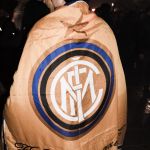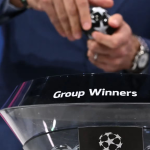
UEFA and the jersey regulations
Rules destined to be controversial as we have seen in recent Champion League matches
September 30th, 2021
Ajax, who were forced to remove the three birds from their Bob Marley jersey, were the first victims of UEFA's stringent uniform regulations. On the last day, Inter were forced to remove the snake from their away jersey and Barcelona played in last season's jersey yesterday as they were unable to wear their away jersey under Article 8.4 which prohibits reflective or iridescent logos. This is not the first year clubs have been sanctioned or forced to change uniforms, but there have never yet been three such illustrious victims in the space of just two Champions League days. It is a problem of an unintentional clash between a rigid and somewhat dusty rulebook and a new vision of jersey design: it is no coincidence that the three changed uniforms are among the most innovative this year, where the design tells stories as in the case of Ajax or takes inspiration from virtual kits as in the case of Barcelona and Inter.
UEFA's uniform regulations consist of a series of rules governing the colours, fonts and patterns on the kits with which clubs take to the pitch during competitions. As one of the first points states, the purpose of these regulations is to ensure equal treatment of clubs, UEFA member associations, manufacturers and sponsors in the spirit of fair play and to support the quick and unambiguous identification of players by referees, spectators and viewers. Many of the rules are in fact designed to protect those watching matches by making them accessible even to those with partial visual impairments. Going into the specifics of the jersey, Ajax changed the home kit twice and the third jersey, dedicated to Bob Marley, once.
In the first case, the iconic white jersey with red band of the Dutch has been modified both in the names (not present during the Eredivisie matches) and in the three stars placed on the back of the collar (which have become the three "X" of Ajax). On the third jersey - one of the biggest successes in terms of sales volume in recent years - UEFA asked to respect paragraph 19.1 of the European regulations which prohibits different expressions to the club and sponsor logos. Inter still kept the snake on the shirt, but in tone-on-tone colour, practically invisible. Article 8.09 speaks clearly about the motifs that are allowed in UEFA competitions "The choice of pattern is unlimited, with the following exceptions: The pattern must be non-pictorial, e.g. it must not contain images, illustrations or other symbols. On the Inter shirt, there was only the words "$INTER Fan Token" without the words "By Socios.com" as in the league. For Barcelona, on the other hand, the problem concerned the irridescent logo, which is expressly prohibited by Article 8.4.


Another extreme case comes from Galatasaray, where the club has been forced to partially change the design of its first game jersey. Initially launched with a diagonal as the main element of the pattern, the kit has undergone a change in recent weeks because, according to the UEFA Equipment Regulations, the shirt falls into the "hooped, banded, striped or checked" categories. The Gala jersey also appears to be graphically covered by the UEFA Regulations and would therefore be entitled to have different sleeve colours. The loophole lies in the fact that the diagonal line extends to the lower arm and not to the shoulders. Only if it was long could the sleeves be of two different colours. The Turkish team, however, is now obliged to play with two orange sleeves.


In addition to the rules on the design of individual jerseys, paragraph 27.1 of the regulations also regulates possible sponsorship: each team, as in the national championships, is not allowed to have tobacco or alcohol companies as sponsors. This is a legitimate and laudable decision, but the fact that one of the main sponsors of the competition is one of the world's most famous beer producers does not make sense.
In view of the clear-cut rules, the question arises spontaneously: with a view to favouring entertainment while taking into account the complex and important logic of television, why not revise these rules, which are now completely obsolete?















